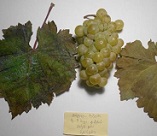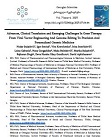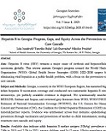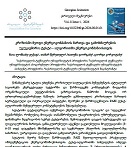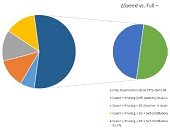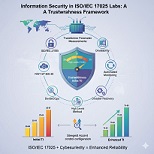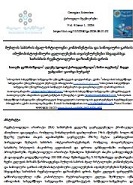TGF-β in patients with refractory immune thrombocytopenia
Downloads
In the pathogenesis of autoimmune diseases, including immune thrombocytopenia (ITP), maintenance of inflammation and the loss of immune tolerance is essential. Transforming growth factor-beta (TGF-β) is a regulatory cytokine with pleiotropic function. TGF-β inhibits differentiation of T helper (Th1, Th2) cells and promotes the development of peripheral Tregs. The aim of our study was to explore the plasma levels of TGF-β and to perform its correlative analyses with peripheral blood biomarkers of systemic inflammation (NLR, PLR, PMR, SII, dNLR) in patients with ITP who did not respond to the first line treatment and had splenectomy as a second line therapy. The concentrations of TGF-β in plasma was quantified using ELISA kits by eBioscience. Statistical analyses was performed using Graph Pad Prism - Mann Whitney U test; for the correlation analyses we used spearman rank correlation by SPSS program. Our study revealed that the level of TGF-β in patients with refractory ITP is significantly diminished compared to the healthy subjects or patients undergoing splenectomy for other reasons than autoimmune or malignant hematological pathologies. There was no correlation observed between the plasma concentrations of TGF-β and the peripheral blood biomarkers of systemic inflammation.
Downloads
Metrics
D. Nugent, R. McMillan, J. L. Nichol, and S. J. Slichter, “Pathogenesis of chronic immune thrombocytopenia: Increased platelet destruction and/or decreased platelet production,” Br. J. Haematol., vol. 146, no. 6, pp. 585–596, 2009, doi: 10.1111/j.1365-2141.2009.07717.x.
H. Frederiksen and K. Schmidt, “The incidence of idiopathic thrombocytopenic purpura in adults increases with age,” Blood, vol. 94, no. 3, pp. 909–913, 1999, doi: 10.1182/blood.v94.3.909.415k02_909_913.
J. B. Segal and N. R. Powe, “Prevalence of immune thrombocytopenia: Analyses of administrative data,” J. Thromb. Haemost., vol. 4, no. 11, pp. 2377–2383, 2006, doi: 10.1111/j.1538-7836.2006.02147.x.
S. Audia et al., “Splenic TFH expansion participates in B-cell differentiation and antiplatelet-antibody production during immune thrombocytopenia,” Blood, vol. 124, no. 18, pp. 2858–2866, 2014, doi: 10.1182/blood-2014-03-563445.
S. Audia, M. Mahévas, M. Samson, B. Godeau, and B. Bonnotte, “Pathogenesis of immune thrombocytopenia,” Autoimmun. Rev., vol. 16, no. 6, pp. 620–632, 2017, doi: 10.1016/j.autrev.2017.04.012.
J. A. Turner et al., “Regulatory T Cell-Derived TGF-β1 Controls Multiple Checkpoints Governing Allergy and Autoimmunity,” Immunity, vol. 53, no. 6, pp. 1202-1214.e6, Dec. 2020, doi: 10.1016/j.immuni.2020.10.002.
G. C. Blobe, W. P. Schiemann, and H. F. Lodish, “Role of Transforming Growth Factor β in Human Disease,” New England Journal of Medicine, vol. 342, no. 18. pp. 1350–1358, 2000, doi: 10.1056/nejm200005043421807.
J. P. Annes, J. S. Munger, and D. B. Rifkin, “Making sense of latent TGFbeta activation,” J. Cell Sci., vol. 116, no. Pt 2, pp. 217–224, Jan. 2003, doi: 10.1242/JCS.00229.
L. Gorelik, P. E. Fields, and R. A. Flavell, “Cutting Edge: TGF-β Inhibits Th Type 2 Development Through Inhibition of GATA-3 Expression,” J. Immunol., vol. 165, no. 9, pp. 4773–4777, Nov. 2000, doi: 10.4049/JIMMUNOL.165.9.4773.
J. T. Lin, S. L. Martin, L. Xia, and J. D. Gorham, “TGF-β1 Uses Distinct Mechanisms to Inhibit IFN-γ Expression in CD4+ T Cells at Priming and at Recall: Differential Involvement of Stat4 and T-bet,” J. Immunol., vol. 174, no. 10, pp. 5950–5958, May 2005, doi: 10.4049/JIMMUNOL.174.10.5950.
S. Sanjabi, S. A. Oh, and M. O. Li, “Regulation of the Immune Response by TGF-β: From Conception to Autoimmunity and Infection,” Cold Spring Harb. Perspect. Biol., vol. 9, no. 6, p. a022236, Jun. 2017, doi: 10.1101/CSHPERSPECT.A022236.
M. G. Strainic, E. M. Shevach, F. An, F. Lin, and M. E. Medof, “Absence of signaling into CD4+ cells via C3aR and C5aR enables autoinductive TGF-β1 signaling and induction of Foxp3+ regulatory T cells,” Nat. Immunol., vol. 14, no. 2, pp. 162–171, Feb. 2013, doi: 10.1038/NI.2499.
J. J. Letterio and A. B. Roberts, “REGULATION OF IMMUNE RESPONSES BY TGF-β*,” http://dx.doi.org/10.1146/annurev.immunol.16.1.137, vol. 16, pp. 137–161, Nov. 2003, doi: 10.1146/ANNUREV.IMMUNOL.16.1.137.
K. Nakamura et al., “TGF-β1 Plays an Important Role in the Mechanism of CD4+CD25+ Regulatory T Cell Activity in Both Humans and Mice,” J. Immunol., vol. 172, no. 2, pp. 834–842, Jan. 2004, doi: 10.4049/JIMMUNOL.172.2.834.
Z. J. Zhou, Y. S. Zhang, C. X. Liang, and Z. Y. Yang, “Role of Th9, Th17, Treg Cells levels and IL-9, IL-17 and TGF-β Expression in Peripheral Blood of Patients with ITP in Pathogenesis of ITP,” Zhongguo shi yan xue ye xue za zhi, vol. 27, no. 1, pp. 180–184, 2019, doi: 10.7534/j.issn.1009-2137.2019.01.029.
S. Metreveli, I. Kvachadze, N. Kikodze, T. Chikovani, and N. Janikashvili, “PERIPHERIAL BLOOD BIOMARKERS IN PATIENTS WITH REFRACTORY IMMUNE THROMBOCYTOPENIA.,” Georgian Med. News, no. 302, pp. 45–49, May 2020, Accessed: Sep. 27, 2022. [Online]. Available: https://europepmc.org/article/med/32672688.
L. Gorelik, S. Constant, and R. A. Flavell, “Mechanism of Transforming Growth Factor  – induced Inhibition of T Helper Type 1 Differentiation,” vol. 195, no. 11, pp. 0–6, 2002, doi: 10.1084/jem.20012076.
S. Yamagiwa, J. D. Gray, S. Hashimoto, and D. A. Horwitz, “A Role for TGF-β in the Generation and Expansion of CD4+CD25+ Regulatory T Cells from Human Peripheral Blood,” J. Immunol., vol. 166, no. 12, pp. 7282–7289, Jun. 2001, doi: 10.4049/JIMMUNOL.166.12.7282.
R. Shanmugasundaram and R. K. Selvaraj, “In vitro human TGF-β treatment converts CD4+CD25− T cells into induced T regulatory like cells,” Vet. Immunol. Immunopathol., vol. 137, no. 1–2, pp. 161–165, Sep. 2010, doi: 10.1016/J.VETIMM.2010.04.017.
J. B. Allen, C. L. Manthey, A. R. Hand, K. Ohura, L. Ellingsworth, and S. M. Wahl, “Rapid onset synovial inflammation and hyperplasia induced by transforming growth factor beta,” J. Exp. Med., vol. 171, no. 1, p. 231, Jan. 1990, doi: 10.1084/JEM.171.1.231.
S. M. Wahl, J. B. Allen, G. L. Costa, H. L. Wong, and J. R. Dasch, “Reversal of acute and chronic synovial inflammation by anti-transformlng growth factor β,” J. Exp. Med., vol. 177, no. 1, pp. 225–230, 1993, doi: 10.1084/jem.177.1.225.
A. P. Kuruvilla, R. Shah, G. M. Hochwald, H. D. Liggitt, M. A. Palladino, and G. J. Thorbecke, “Protective effect of transforming growth factor beta 1 on experimental autoimmune diseases in mice.,” Proc. Natl. Acad. Sci. U. S. A., vol. 88, no. 7, p. 2918, Apr. 1991, doi: 10.1073/PNAS.88.7.2918.
G. J. Thorbecke, R. Shah, C. H. Leu, A. P. Kuruvilla, A. M. Hardison, and M. A. Palladino, “Involvement of endogenous tumor necrosis factor alpha and transforming growth factor beta during induction of collagen type II arthritis in mice,” Proc. Natl. Acad. Sci. U. S. A., vol. 89, no. 16, pp. 7375–7379, 1992, doi: 10.1073/PNAS.89.16.7375.
E. Raz et al., “Modulation of disease activity in murine systemic lupus erythematosus by cytokine gene delivery,” Lupus, vol. 4, no. 4, pp. 286–292, 1995, doi: 10.1177/096120339500400409.
K. Ohtsuka, J. D. Gray, M. M. Stimmler, and D. A. Horwitz, “The relationship between defects in lymphocyte production of transforming growth factor-beta1 in systemic lupus erythematosus and disease activity or severity,” Lupus, vol. 8, no. 2, pp. 90–94, 1999, doi: 10.1191/096120399678847489.
Copyright (c) 2022 Sophio Metreveli , Nino Nanava , Irine Kvachadze, Tinatini Chikovani, Nona Janikashvili

This work is licensed under a Creative Commons Attribution-NonCommercial-NoDerivatives 4.0 International License.

























